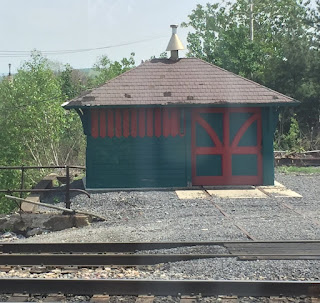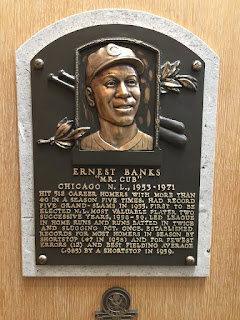KW, what are you doing now. Kemosabe, my name is Tonto. Ok, Tonto, what are you doing? Kemosabe, Tonto listening to see when the train is coming down the track. Hey wait, I feel a song coming on. Oh brother, I just can't wait. Ok tour guide, I mean Kemosabe here goes. I hear that train a comin, it's rollin round the bend. KW, tour guide it's Tonto. Ok Tonto, just stop there. It's already a song by Johnny Cash.

This is our train, ole No. 26.

Tour guide boarding the train.

Hey tour guide, we are ready to roll.

You know Cj, there's not much to look at.

Hey tour, I heard the Conductor say that is the outhouse. I don't think he said outhouse KW, it's the Train workman's house.

Hey tour guide, don't take our picture. CJ & I are riding the rails as hobo's.

CJ, look, Mrs. tour guide is a Hobo too.

Mrs. tour guide on the little red caboose.

Hey tour guide, look at all that luggage, Mrs. tour guide must have packed them.

The mail car.

KW & CJ sorting mail.

Oh man, I thought we were finished. Look at all those mail bags.

Electric City Trolley Museum.

Hey tour guide, do we get to ride that trolley too? Yes KW, two trains in one day. Oh wow, that's really cool. I have never been on a trolley before.

Mrs. tour guide boarding the Trolley.

Ok, we are ready. How does this thing run? I don't see any steam or smell any diesel fuel. KW, it runs on electricity. Well, isn't that special. That will take an awful long extension cord. KW, it is propelled by onboard electric motors and requires a trolley pole to draw power from overhead wire.

Getting our tickets punched by the conductor.

Riding under a new bridge at Nay Aug Gorge.

Going thru a mile long tunnel.

The gang riding the trolley.

The tour guide must be tied.

Tour guide woke up in time to have his picture taken with the engineer.

The Baseball Trolley.

When there was a day game, they hung this sign. When it was a Night game they turned the sign around.

Glass Insulators.

Trolley No.651.

Tour guide making a souvenir penny.

- - ..-. -.
PS:
Glass insulators were first produced in the 1850's for use with telegraph lines. As technology developed insulators were needed for telephone lines, electric power lines, and other applications. In the mid 1960's a few people began collecting these antique glass insulators. Today there are over 3000 insulator collectors.









































